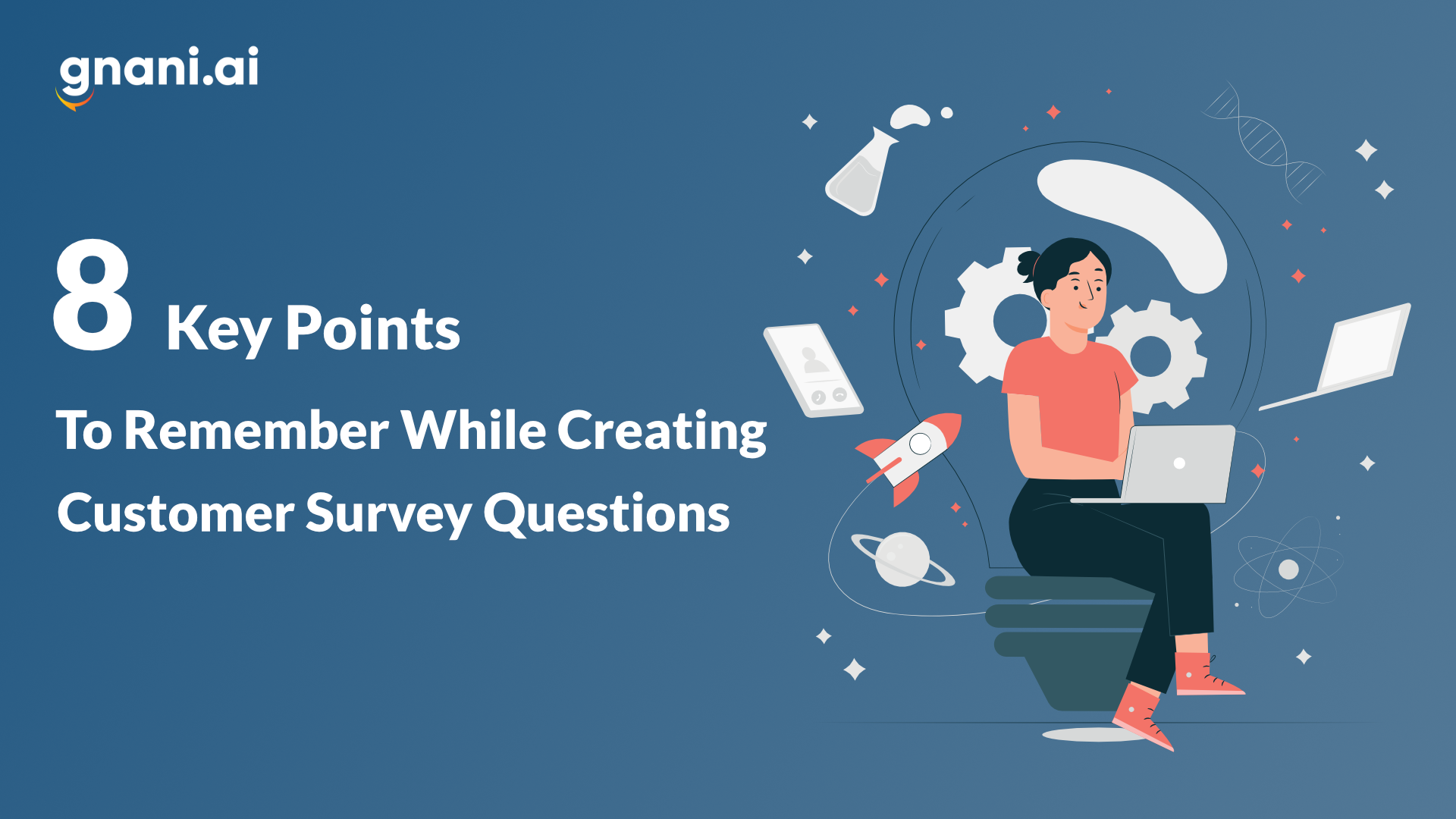The best part about customer surveys is getting feedback from the horse’s mouth. Before online surveys were a thing, you had to distribute paper questionnaires, wait for the respondents to complete them, collect the paper, and sit in the office sorting out the answers. Analyzing the survey takes up the rest of the time.
Thankfully, we have bid goodbye to those times as we have online survey creation tools that let you make one in a few minutes.
What is a customer survey?
A customer survey is a mechanism for collecting customer feedback. It helps measure customer satisfaction and engagement, perform market research and understand customers’ expectations. According to a leading business report, 80% of growing organizations use surveys to collect customer data.
Let us see how you can create effective customer survey questions.
How To Create Effective Customer Survey Questions
1. Define your objectives:
If you don’t know why you are conducting a survey, you will end up including a lot of fluff questions that don’t add any value. You need to know the ‘why’ behind your surveys.
Below are some of the possible goals behind a survey:
- Do you want to measure customer satisfaction with the help of metrics such as Net Promoter Score (NPS), Customer Effort Score (CES), or Customer Satisfaction (CSAT), to name a few?
- Would you like to understand how aware your customers are of your brand?
- Do you want to find out issues regarding your after-sales service?
- Is it to understand why you have a high customer churn rate?
Each of the above goals requires a different line of thought and strategy. It is crucial that the business knows what they want to achieve with the survey.
2. Define your demographic:
Whom do you want to send your survey to? Your existing customers? Your potential customers? Warm leads in the pipeline? Or do you only want to send it to one-year long customers?
Other demographic and psychographic characteristics that you can include are age, sex, location, job role, income range, buying motivation, habits, desires, needs, etc.
When you have a clear picture of whom you are targeting, it is easy to build your survey. Segment your target population based on the above factors so that you don’t send the same questions to different audiences.
3. KISS:
Follow the Keep It Short and Simple (KISS) formula when creating surveys. Find the easiest way to ask a question so that the respondents’ time is also saved. You don’t want them to end the survey because you thought it was right to ask them 73 questions.
When was the last time you spent even 30 minutes on a survey?
4. Ask questions that are necessary:
Be miserly when adding questions. Every question in your survey should have a purpose and should be a reflection of your end goal. Do not include questions because “Hey, what’s the harm in asking?”
5. Open-ended questions:
Before we harp on the open-ended questions part, let us tell you that there are several question types that can be used in a survey. To reduce monotony from setting in, it would be wise to include as many question types as possible.
But why open-ended questions, you ask?
Because it lets the customer open up and share their thoughts in their own words, clicking on a radio button or checking a checkbox doesn’t bring as much joy as answering an open-ended question.
6. One question at a time:
“What do you think about the latest interaction with our CX agent and the features in our product?”
How would you like to answer a customer survey example question like that? Which part of the question do they answer? You’ve asked them about two things- customer service interaction and your features.
Ask only one thing in a question.
7. Don’t ask leading questions:
“What do you think about the latest features that we added to PRO Max membership?”
- Excellent
- Too good
- Brilliant
- Great
- Perfect
Do you see what’s wrong with the options presented to the respondent? You have given them no option to say if they had a problem with it.
8. Close the feedback loop:
One of the most crucial aspects of a customer satisfaction questionnaire is to close the feedback loop. What is it? It means responding to the survey and informing the customer of the same.
For example, the customer has responded that they would like a better way to contact customer care. Therefore, you have increased the number of channels available to contact. Once you do this, you inform the customer that you have responded to their feedback. This is closing the feedback loop, and it is extremely effective.
Creating customer surveys can be intimidating if you don’t know the exact steps to follow. For those dilly-dallying with creating one, you can use the strategies we have listed to create effective surveys.
If you following all the rules are a little overwhelming, you can always use Conversational AI for engaging surveys and get better results.


